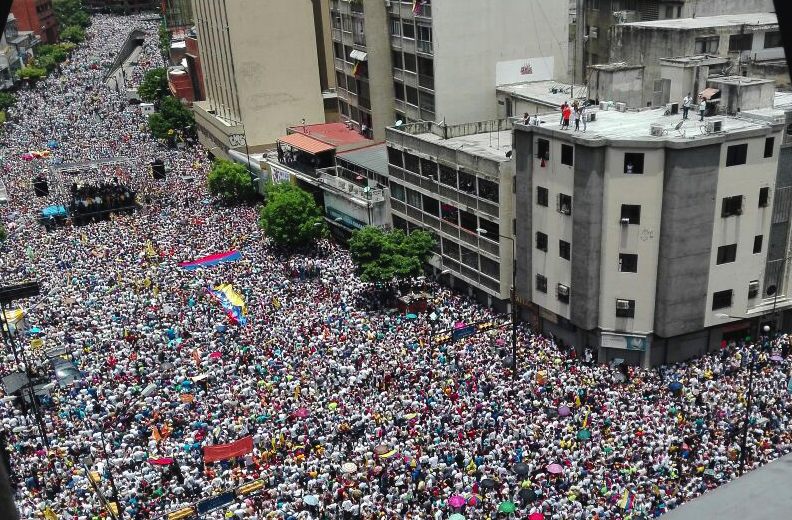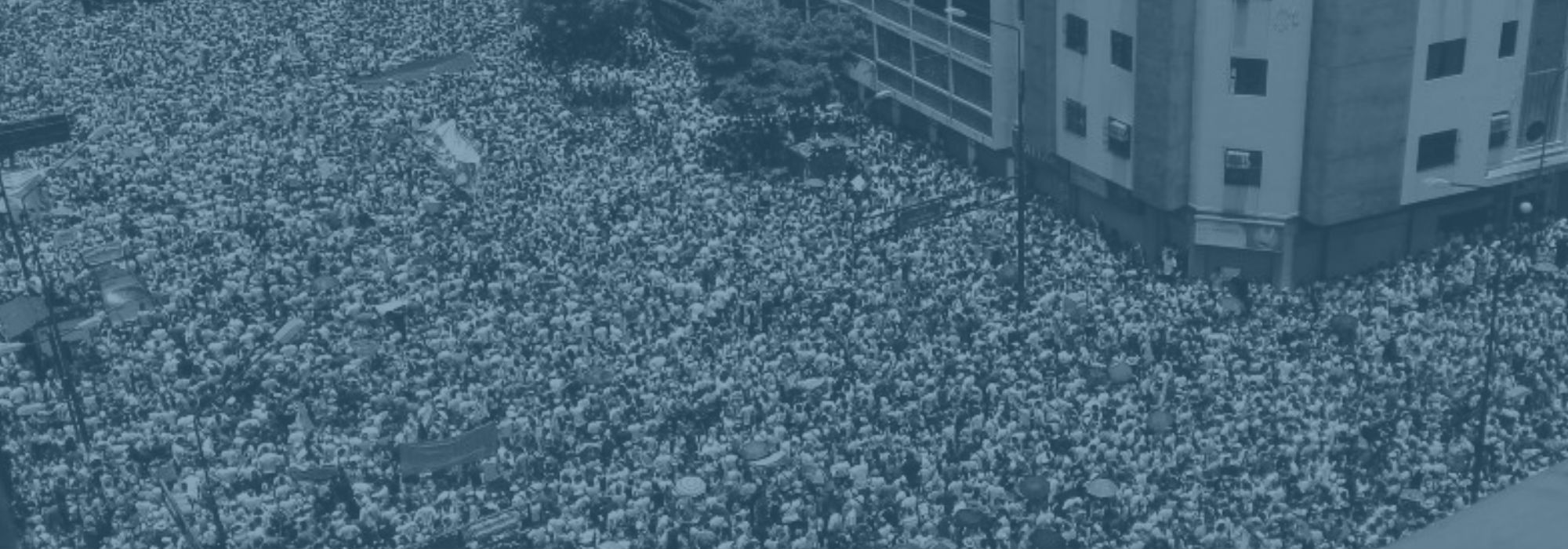By Allison Fedirka
Today Venezuelans are expected to hold marches nationwide in response to calls from opposition coalition Mesa de la Unidad Democrática (MUD). On Sept. 5, MUD Executive Secretary Jesús Torrealba called on municipalities to gather in front of the regional headquarters of the National Electoral Court located in state capital cities. Similar to the Sept. 1 marches in Caracas, the protesters will demand that a date be set for the next step of the revocation referendum aimed to oust President Nicolás Maduro from office.

While protests are the norm in Venezuela, this current series of public manifestations against the government is different in that they are reaching a critical point. The plight in Venezuela is not eternal. In our annual forecast, we said that Venezuela’s government would find itself gridlocked throughout the year. In our May update of the situation, we said the political crisis was turning into a constitutional crisis and that heightened desperation and violence appear imminent. Such turmoil, which has recently become the norm in Venezuela, is not sustainable. We now appear to be reaching the critical point where something has to give.
The Venezuelan government and opposition are in a fundamentally different scenario than they were in four months ago. Here we are not talking about food shortage, shortfalls in government revenue, high inflation and other socio-economic problems. Rather, their system of constraints has shifted. The opposition is more organized, but is running out of time for its constitutional shift to power. The Maduro government finds itself regionally weakened and on the defensive. The tables are turning.
Over the course of the past few months, the MUD coalition has worked to organize its bases for street protests. MUD succeeded in getting voters to participate in legislative elections last December, but did not translate this support into street demonstrations until May. In May, after other institutional approaches had failed, it became apparent that the primary means for the opposition to oust Maduro from office would be through a popular referendum. This required mass public participation, and the opposition began dedicating much of its time and resources to this objective. Four months after strong organizational efforts, the opposition now has a mass of followers it can call upon at will to carry out actions.
While the increased level of organization has expanded MUD’s street power, the opposition coalition finds itself running out time. In order to be able to trigger new elections via the removal of Maduro by public referendum, the referendum must be carried out this year. Any referendum to remove Maduro that takes place in 2017 (within two years from the end of his term in office) would result in the vice president taking power. The opposition wants a completely new government installed by new elections and has said a referendum in 2017 would be pointless.
The first phase of the recall referendum – collect 1 percent of voter signatures in every state – was approved by electoral authorities on Aug. 1. The next step is to set the date for the second phase – collecting 20 percent of registered voter signatures. The electoral authorities have a window of time during which they must establish a date for the second step of the referendum and outline the procedure. The opposition pushed for this to happen at the earliest possible time, the last week of August. This would have set the date for the referendum sometime between late October and early December of this year. The electoral authorities are taking as much time as possible to move forward with the referendum. They support a proposal that calls for the collection of 20 percent of voter signatures over a few days starting on Oct. 30, meaning the referendum vote would take place around March 2017.
Meanwhile, Maduro finds himself domestically and regionally in a weaker position. He has not solved any of the country’s core problems – inflation, food and medicine shortages, lack of revenue, insecurity and dwindling international reserves. Discontent with the government over these issues has only continued to grow. The government took defensive actions prior to the Sept. 1 marches in Caracas. These actions included increasing security on the streets, arresting opposition figures and conducting raids.
However, the most concerning development for the government is what happened after the Caracas march on Sept. 2. On this evening in the town of Villa Rosa in Nueva Esparta state, protesters confronted Maduro after he had inaugurated a nearby public housing project. The town in general has been seen as supporting the Maduro government, so just the presence of a strong anti-government protest is noteworthy. Further, when Maduro decided to leave his vehicle and walk with the crowd, he and some protesters got into a physical altercation. A town that is expected to support him turned aggressively antagonistic. The immediate government response was to cut cellphone service (an attempt to prevent digital dissemination of the event) and detain at least 30 individuals.
Regionally, Maduro also now finds himself in a weaker position. The left-wing tide that rolled over the region in the early 2000s is receding with haste. Maduro finds himself losing power, and none of his usual regional allies are in a position to offer support. Brazil voted on Aug. 31 to follow through with the impeachment of former President Dilma Rousseff. Bolivian President Evo Morales failed in his bid to run for another term after a referendum in February. He currently finds himself in conflict with protesting miners in the country that, so far, has resulted in the death of a vice minister. Ecuadorian President Rafael Correa has said he does not plan to seek reforms that would allow him to run for another term next year.
Maduro is running out of support and the opposition is running up against a deadline. This is creating the perfect storm for bringing the Venezuela crisis to a head. That said, there are multiple ways this conflict could culminate.
Maduro could voluntarily resign due to public pressure. In this case, the vice president would assume power – though most likely in a temporary capacity as there would be calls for new elections. Public pressure could also bring about a referendum this year that then ousts Maduro from office and ushers in new elections. The military might also try to assume power, though the armed forces are not totally united and strong public opposition would continue in this scenario.
If a referendum is not held this year and Maduro does not resign, the opposition will be put in the difficult position of trying to oust him without the backing of a constitutional procedure. Due to the region’s history, South Americans are very sensitive to coups and other power transitions that do not include elections. One reason the opposition has pursued the recall referendum so vehemently is because it provides a constitutional way to assume power, meaning the opposition’s legitimacy could not be strongly questioned. Forcefully removing Maduro by no longer recognizing the government would be out of line with the constitution and bring the opposition’s legitimacy into question.
It could be argued that Maduro has broken from the constitution, as members of the Organization of American States have already suggested, and that the opposition can depose him by alternative means and then stage new elections. However, the constitution is the last remnant of political institutionalism in the country and disregarding it is a risky move for the opposition as it seeks to legitimize a rise to power.
In the long run, it will take years – not weeks or months – to restore Venezuela’s economic and political systems. Venezuela’s path to recovery will look somewhat similar to Argentina’s current recovery process, though on an exponentially larger scale. The first step is the rise of a government willing to make economic reforms that end populism in the country. Today’s protests, along with those on Sept. 1, appear to be a step in that direction.








